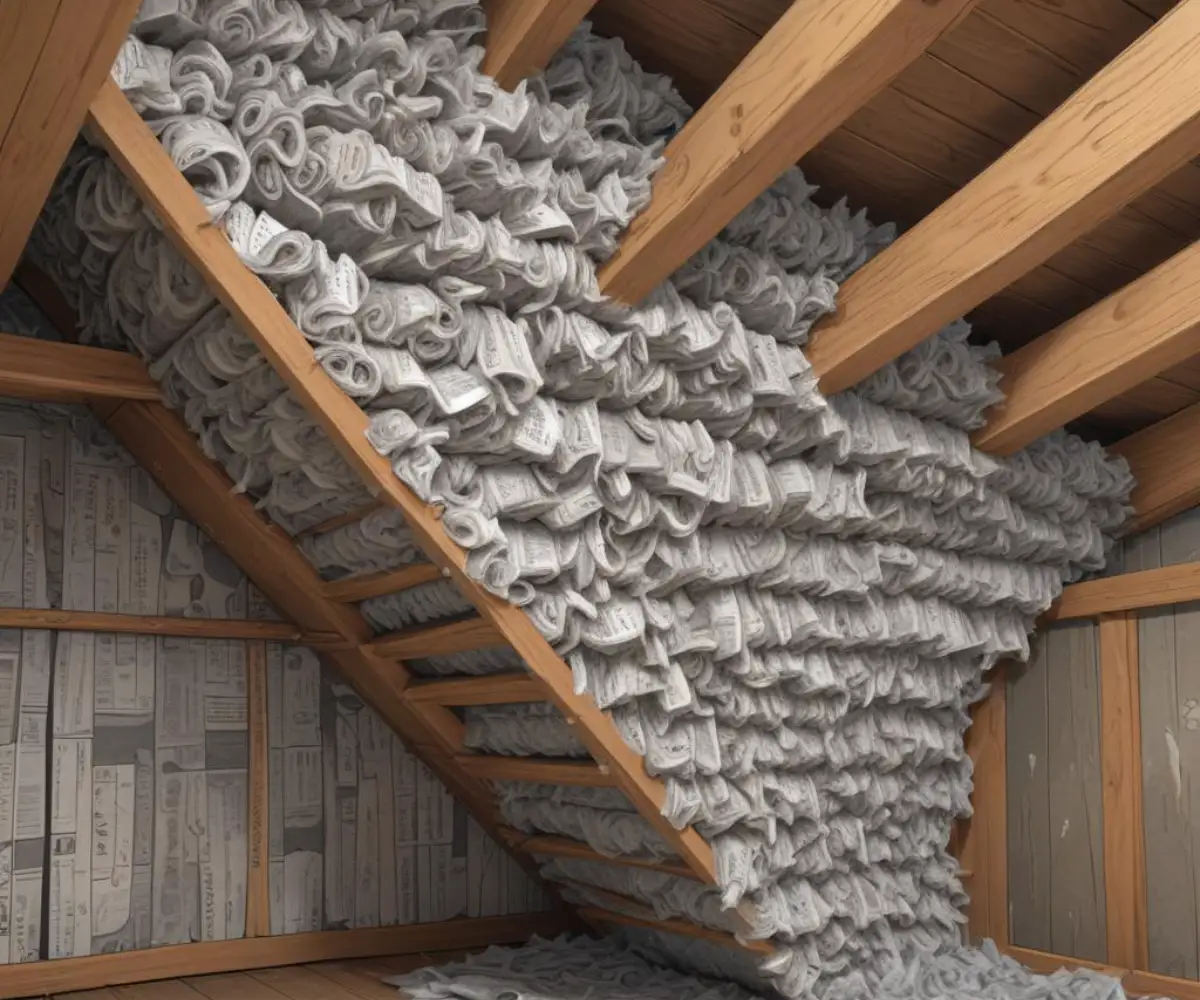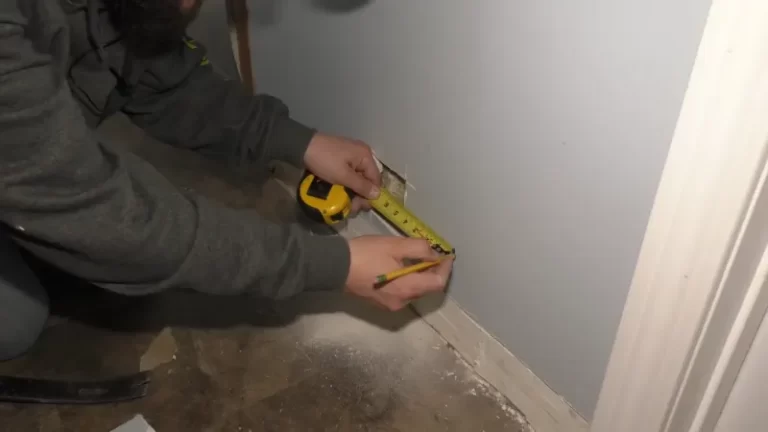R Value of Newspaper: Is This Eco-Friendly Insulation Secretly the Best?
Skyrocketing energy bills are a homeowner’s nightmare. You diligently turn off lights and unplug appliances, yet your heating and cooling costs continue to climb, forcing you to sacrifice comfort for the sake of your budget. This constant battle against energy waste is a major problem for homeowners seeking both financial relief and a comfortable living space.
The culprit is often hiding in plain sight: your home’s insulation, or lack thereof. Poor insulation allows the air you pay to heat or cool to escape right through your attic and walls. The search for a solution leads to a confusing maze of materials, each with its own claims and costs, leaving you to wonder which choice is truly effective, affordable, and sustainable.
In this landscape of complex choices, an old-school material made from a simple, everyday item is making a huge comeback: newspaper. Processed into what is known as cellulose insulation, this recycled product boasts impressive performance that rivals many of its modern competitors. But what is the actual R-value of newspaper, and can it solve your home’s energy efficiency problems?
You'll Learn About
What Exactly is R-Value and Why Does It Matter?
Before diving into newspaper insulation, it’s crucial to understand what “R-value” means. In simple terms, R-value is a measure of a material’s ability to resist heat flow. The “R” stands for resistance. The higher the R-value, the better the material is at insulating your home.
Think of it like the SPF of your house. A higher SPF in sunscreen provides more protection from the sun’s rays. Similarly, a higher R-value provides more thermal protection, keeping your home warmer in the winter and cooler in the summer. Achieving the right R-value for your climate zone is the key to unlocking significant energy savings and year-round comfort.
The Impressive R-Value of Newspaper Insulation
When we talk about the R-value of newspaper, we’re referring to cellulose insulation, which is made from 80-85% recycled newsprint. This isn’t just stuffing old papers in your walls; it’s a professionally manufactured product treated for fire and pest resistance. The performance of this material is surprisingly high.
Blown-in cellulose insulation has an R-value of approximately 3.2 to 3.8 per inch of thickness. This is a significant figure, especially when compared to other common insulation types. This high R-value means that for every inch you install, you get a powerful barrier against heat transfer, making it an incredibly efficient choice.
How Does Application Method Affect R-Value?
The way cellulose insulation is installed can influence its final R-value and effectiveness. Different methods are used for different parts of the home, each optimizing the material’s performance.
Loose-Fill (Blown-In): This is the most common method for attics. Dry cellulose is blown through a large hose, creating a fluffy, seamless blanket of insulation over the attic floor. This method is excellent for covering joists and getting into tight nooks and crannies, eliminating the gaps that can plague other insulation types.
Dense-Packed Cellulose: Used for enclosed spaces like wall cavities, this method involves blowing the cellulose in under pressure. This tight packing increases the density, slightly raising the R-value and, more importantly, creating a formidable barrier against air movement. This makes it an exceptional choice for soundproofing as well.
Wet-Spray Cellulose: For new construction, cellulose can be mixed with a small amount of water and an adhesive. This mixture is sprayed into open wall cavities, where it sticks to the surfaces and dries to form a solid, gap-free insulation layer that won’t settle.
A Warning About DIY Newspaper Insulation
You might be tempted to simply crumple up or stack old newspapers in your attic as a cheap insulation solution. This is a dangerous and ineffective idea. Untreated newspaper is a major fire hazard. Furthermore, it has a very low R-value compared to professionally manufactured cellulose because it lacks the proper density and structure to effectively trap air.
R-Value Showdown: Newspaper vs. The Competition
To truly appreciate the power of cellulose, it’s helpful to see how its R-value stacks up against other popular insulation materials. As you can see, cellulose consistently outperforms many common alternatives, especially standard fiberglass.
Understanding the differences between materials is key to making an informed decision. For a deeper dive into how these two leading options compare, our guide on Fiberglass vs Cellulose Insulation: The Definitive Guide provides a comprehensive breakdown.
| Insulation Material | Typical R-Value (Per Inch) |
|---|---|
| Cellulose (Newspaper) | 3.2 – 3.8 |
| Fiberglass (Loose-Fill) | 2.2 – 2.7 |
| Fiberglass (Batts) | 3.1 – 4.3 |
| Mineral Wool (Batts) | 3.0 – 3.3 |
| Spray Foam (Open-Cell) | 3.5 – 3.8 |
| Spray Foam (Closed-Cell) | 6.0 – 7.0 |
Factors That Can Ruin Your Newspaper Insulation’s R-Value
Achieving a high R-value isn’t just about choosing the right material; it’s about ensuring it can perform optimally for years to come. Two main enemies can compromise the effectiveness of cellulose insulation: moisture and settling.
The Impact of Moisture
Like any paper product, cellulose insulation is highly absorbent. If it gets wet from a roof leak or condensation, the trapped air pockets that give it its insulating power fill with water. This collapses the material and completely destroys its R-value. Wet cellulose is not insulation; it’s a damp, heavy mat that can promote mold and rot.
Settling and Compression Over Time
Over the years, loose-fill cellulose in an attic can settle, reducing its initial installed depth. If an installer blows in 10 inches of insulation, it might settle to 8 or 9 inches over time. This loss of thickness directly translates to a lower overall R-value for your attic. Professional installers account for this by installing it at a depth that will settle to the target R-value.

The Solution: Smart Installation and Home Maintenance
The solution to getting the most out of your newspaper insulation is to address its weaknesses head-on. Proper installation and proactive home maintenance are the keys to long-term thermal performance and energy savings.
Air Seal Before You Insulate
Insulation is not a substitute for air sealing. Before adding a single puff of cellulose to your attic, you must seal all air leaks. This includes gaps around light fixtures, plumbing pipes, and the top plates of walls. Blocking these air pathways prevents warm, moist air from your living space from entering the attic, which is the primary cause of condensation and moisture issues.
Why Professional Installation is Non-Negotiable
While it may seem like a DIY-friendly job, installing blown-in cellulose correctly requires specialized equipment and knowledge. A professional installer ensures the material is applied at the correct density to prevent excessive settling and achieve the advertised R-value. They can also work safely and efficiently, avoiding the mess and potential hazards of a DIY attempt.
The process of improving your home’s energy efficiency is often part of a larger renovation. When undertaking such projects, careful planning is essential to avoid costly mistakes. For example, if you’re also remodeling your kitchen, understanding intricate tasks like how to remove granite countertops without damaging cabinets requires similar professional-level expertise to ensure a successful outcome.
Regular Home Check-ups
Once your insulation is in, protect your investment. Regularly inspect your roof for leaks and ensure your attic has proper ventilation. Good ventilation helps moisture escape before it can be absorbed by the cellulose. Just as a strong fence depends on well-maintained post-on-pipe-fence-posts to remain effective, your insulation relies on a dry, well-ventilated environment to do its job.
Conclusion: A Smart, Sustainable Choice for Your Home
The R-value of newspaper, in the form of cellulose insulation, is impressively high, making it one of the most effective thermal insulators available. Its performance-per-inch often exceeds that of standard fiberglass, and its ability to create a dense, seamless thermal blanket makes it exceptionally good at reducing energy loss.
While it has weaknesses, namely its vulnerability to moisture and potential for settling, these are easily managed through proper air sealing and professional installation. When you combine its excellent thermal resistance with its eco-friendly credentials—being made almost entirely of recycled materials—cellulose insulation stands out as a superior choice for any homeowner looking to solve their high energy bills and improve their home’s comfort and sustainability.
Frequently Asked Questions
What is the R-value of newspaper insulation?
The R-value of insulation made from newspaper, known as cellulose insulation, is approximately 3.2 to 3.8 per inch. The total R-value is determined by the thickness and density of the installed insulation. For example, 12 inches of loose-fill cellulose insulation could provide a total R-value of around 42.
How does the R-value of newspaper compare to other insulation?
Cellulose insulation made from newspaper generally has a higher R-value per inch than loose-fill fiberglass, which is rated between R-2.2 and R-2.7 per inch. However, spray foam insulation can have a higher R-value, ranging from 4.0 to 6.5 per inch, because it expands to fill gaps and prevent air leakage.
Is newspaper a good insulator?
Yes, newspaper is an effective and eco-friendly insulation material when processed into cellulose insulation. It is made from recycled paper products and provides excellent thermal performance, helping to keep homes warm in the winter and cool in the summer. The paper is treated with fire retardants to ensure safety.
Does crumpling or shredding newspaper provide better insulation?
Shredded paper is generally a better insulator than crumpled paper because it creates more small air pockets that trap air and slow down heat transfer. Commercial cellulose insulation is made from shredded newspaper and other paper products that are then blown into place. This method allows for a denser packing that minimizes air convection.
Is newspaper insulation a fire hazard?
While untreated paper is flammable, commercially produced cellulose insulation made from newspaper is treated with fire retardants like boric acid and ammonium sulfate. This treatment is required by building codes to make the insulation fire-resistant. These non-toxic chemicals also help deter pests.
Can newspaper insulation get wet?
Moisture is a concern for newspaper insulation as it can absorb water, which reduces its R-value and can lead to mold growth. If the insulation becomes wet, it can become heavy and cause building materials to sag. For this reason, it may not be the best choice for areas prone to moisture, like crawl spaces.

